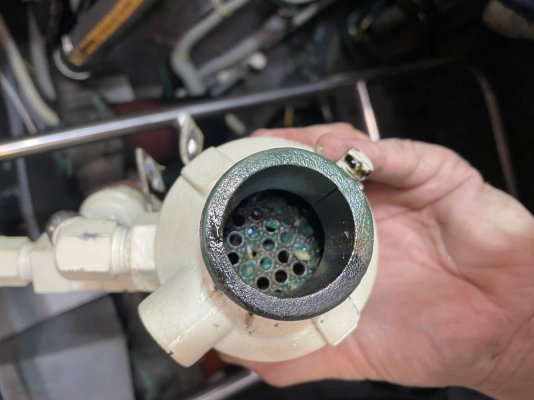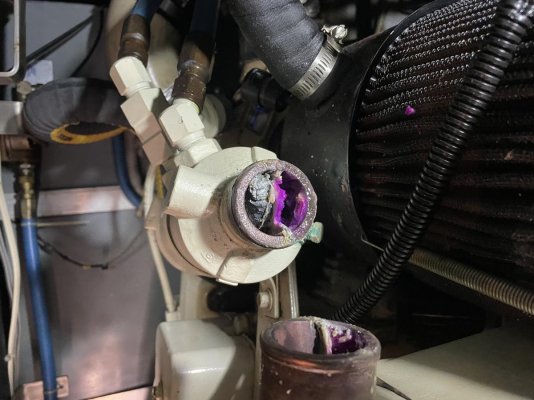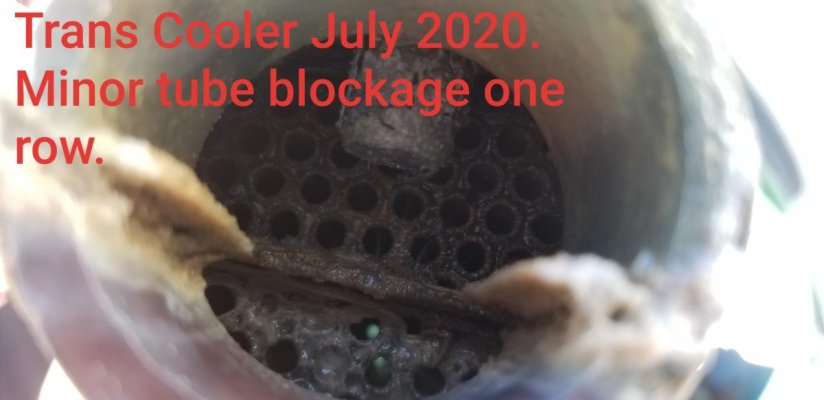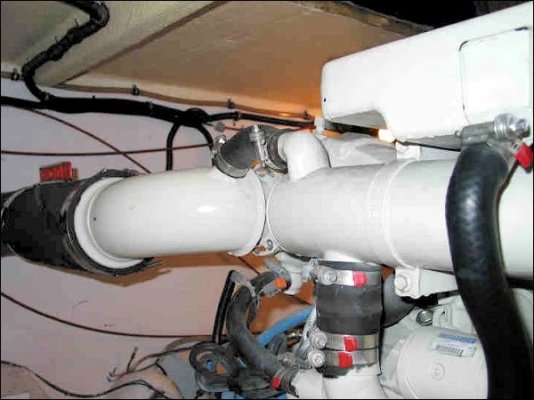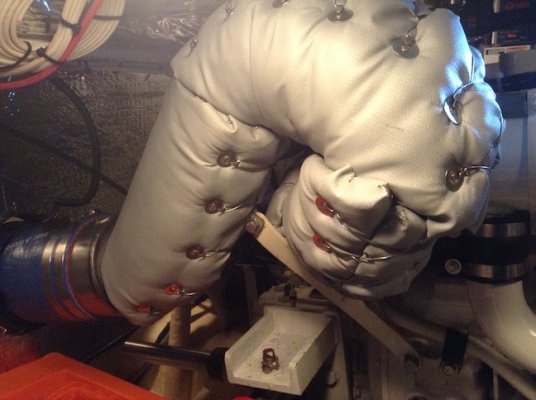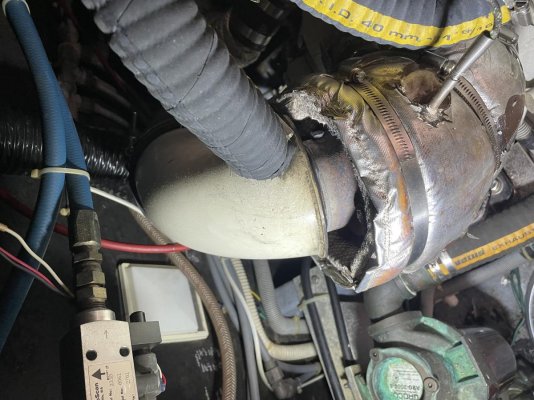Hi Cigatoo. Careful here. You've provided a link to an article included in the sbmar web site. You have alluded to the author ("this guy") as a well informed Cummins Tech, yet the article itself is not attributed. So who actually authored this piece? Are you assuming Tony Athens authored this piece? If so, while I respect his opinions, I am loathe to broad-brush this written work across the board. In this case, if you're suggesting that a 20 year old transmission cooler must be replaced, I'm afraid you're conflating apples with oranges.
All the pictures in the article, and the overall gist of the article refer to mixed-metal (aluminum and copper-based) aftercoolers, which are NOT the same kettle of fish as the transmission cooler from the original poster (OP). The OP stated, and is holding a cooler that appears to be a bronze casting, containing a (probably) cupro-nickel tube bundle, with no contact with hot charge air. These coolers have a SIGNIFICANTLY longer lifespan than the mixed-metal aftercooler displayed in the sbmar URL. And while I agree that lack of maintenance of ANY marine item results in a shortened lifespan, I suggest that the OP's transmission cooler, with correct and routine maintenance, can and will last the lifetime of the original engine.
I confess to be somewhat aghast that Cummins uses aluminum in a context that mixes seawater with anything hot, like charge air in an aftercooler. And while 32,000 hours in 10 years of service for the referenced engine is impressive, I expect proper, routine preventative maintenance of ALL aspects of that engine were the key.
And I'm all ears if anyone can provide a better metric for PM than age or engine hours.
Regards,
Pete
ps-to the Original Poster larman-yup, take the cooler to a radiator shop for cleaning, pressure testing, and inspection. Then do it again every 5 years down the road. Money well spent.

